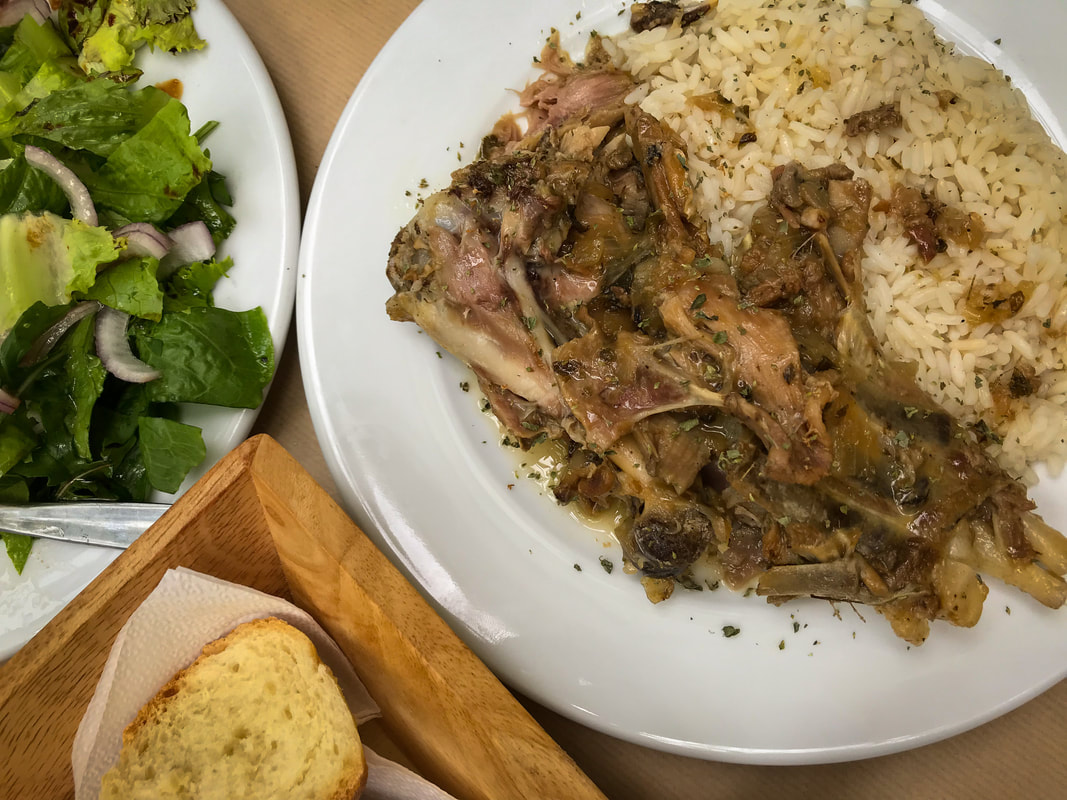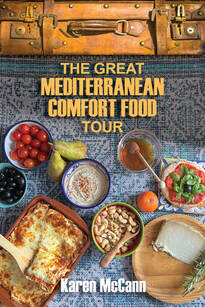|
A recipe from my #1 Amazon bestseller The Great Mediterranean Comfort Food Tour
"We've been traveling the world full-time for over nine years, and Karen's books have played a big part in our trip planning. This new book lays out the perfect itinerary for eating your way along the sun-kissed Mediterranean!"
Debbie and Michael Campbell, The Senior Nomads, authors of Your Keys, Our Home |

How could I eat one of those sweet little creatures? Well, Ikaria was hideously overrun with goats, thanks to EU subsidies rewarding larger herds. On an island with just 8423 residents, there were currently 35,000 goats, most roaming free and wreaking havoc on the island’s vegetation — the main food supply for the human residents.
WILD GOAT Zisis Popi, Popi's Restaurant, Ikaria Greece When I came for a cooking demonstration, Zisis explained the meat was super fresh, having been butchered that very morning. He and his mother raise their own goats in a grassy pen beside the restaurant's vegetable garden. Start with about 2.25 kilos (5 lbs.) of meat. Because wild goat is so lean, formal cuts such as loin and shoulder aren’t practical; instead you make “village cuts,” dividing the meat any way you can, so long as it winds up a size that’s roughly suitable for cooking. You add lots of salt, pepper, and about three quarters of a cup of olive oil. You cook the meat in a ceramic pot at 200 degrees Celsius (400 degrees Fahrenheit) for an hour and a half to two hours. The cooking brings out the meat’s natural juices, but check it a few times and if it seems dry, add a little vegetable broth. When the meat is tender and the smaller bones practically liquified, you take it out of the oven and sprinkle it with fresh herbs, especially fresh oregano. Serve at once. For more on Popi's (which has amazing food!) and the island of Ikaria, see my post Greece's Island of Longevity. |
